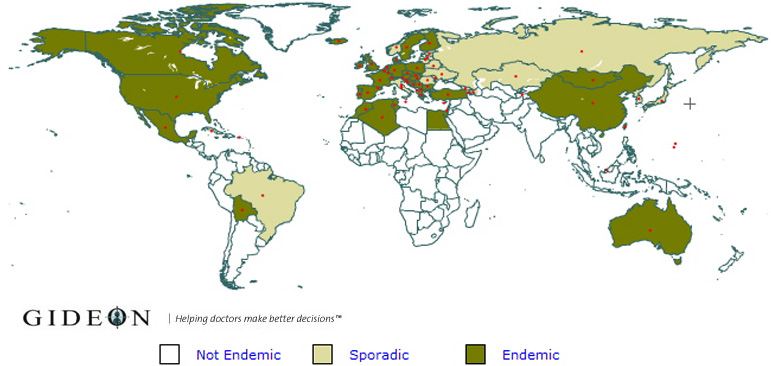About Bayer HealthCare

About Bayer HealthCare
New Seresto® keeps ticks and fleas at bay month after month
New collar from Bayer Animal Health offers dogs and cats an unparalleled protection period of up to eight months from ticks and fleas in a single treatment
12. April 2012
Birmingham, UK, 12 April 2012 – Bayer Animal Health today launched Seresto (known as Foresto in some European markets[*]), the latest in a long line of innovative anti-parasite products from one of the world’s leading animal health companies. The Seresto collar gives outstanding protection against fleas and ticks for up to 8 months from a single application. Seresto is the first new treatment in more than a decade to offer combined tick and flea protection for both cats and dogs, and as the first product to offer repellency against ticks for cats as well as dogs, Seresto helps to reduce the risk of vector-borne disease transmission from these parasites.
Dr. Helmut Pinsenschaum, veterinary surgeon from Münchsteinach, Germany spoke of the launch of Seresto, “This is the first time we have had a product that can offer protection from both ticks and fleas for as long as eight months with a single application. This level of long-term efficacy is completely new, and the fact that you can also use the same treatment for both cats and dogs makes it a real game changer for both vets and our patients.”
Seresto represents a major advance in the development of anti-parasitic treatments. Through the integration of a unique polymer matrix it slowly releases controlled doses of two proven active ingredients – imidacloprid and flumethrin – that together are proven to be highly effective treatments for ticks and fleas, ensuring the animal always receives just the right dose for optimal protection.
Experience with the use of Seresto is expected to have a significant impact on the treatment recommendations of many veterinarians.Dr. Adriana Estrela, a veterinarian from Portugal who participated in the clinical studies with Seresto saw a change in her practice: “I didn’t use to recommend collars. Instead I would recommend monthly application of spot-ons, which are great products, but we often had to remind people that the product had to be applied every month to remain effective. Sometimes forgetting for a week or two was enough for the animal to become infested again. The truth is that with Seresto everything changed – now we apply Seresto and we know that for the next eight months we don’t need to worry.”
The launch of Seresto comes as veterinarians worldwide are seeing changes in the patterns of parasite risk for pets. Dr. Ferenc Szaniszlo, a veterinary surgeon from Hungary experienced these changes first hand, “In our practice, over the last twenty years we have seen more and more tick infestations and more and more infections transmitted by ticks. And these cases aren’t just happening in the traditional tick seasons, or in remote forest areas, so it is critical that we ensure all our dogs and cats are protected all year round.” Dr. Francois Laurent, a veterinarian from France, echoes this sentiment: “We know that the animals that we treat are exposed to the constant presence of ticks and fleas throughout the year, so we recommend antiparasiticides are used all year long. In our experience, Seresto is a simple, effective, long-term solution, and even our most sceptical customers have been won over by the benefits they have seen.”
Ute Schucht from Germany, a dog owner involved in the field-trials of Seresto, is convinced of the benefits of using Seresto. “My dog Nero loves to spend time in the woods. Before, it didn’t matter what we tried, often he would still come home with ticks in his fur and they would sometimes drop off in the house. Since we started using Seresto two years ago we have not faced this typical problem. It’s great, now with Seresto we know that he is protected from fleas and ticks wherever he goes. Nero’s brother Luka lives near us, but he wasn’t involved in the trial, so his owners kept using the same treatments we used to. Unfortunately that means that when we walk the dogs in the woods, Luka often still collects ticksbut Nero is well protected for a long time.”
Online media centre For access to supporting media materials, please visit: About Seresto Seresto is available as a collar in two sizes that can be worn by both cats and dogs. It has been designed to stay securely in place for an up to eight month period while ensuring safety from strangulation.
Seresto is unique in including both a leading insecticide, imidacloprid and the highly effective acaricideflumethrin. These compounds are embedded in an innovative waterproof, odour-free collar made of a polymer matrix that ensures that the active ingredients are consistently released over an up to eight month period at an effective, low dose.
About ticks and fleas
Tick and flea infestations are more than just a nuisance; they also pose a very real threat to both pets and humans as they can transmit serious diseases. These diseases have become more frequently diagnosed and more geographically widespread, increasing both the danger posed to pets and the risk posed to humans.
Fleas are the most common ectoparasite in cats and dogs and are capable of spreading and/or causing a number of diseases that affect cats, dogs and humans, including tapeworm, flea allergy dermatitis (FAD), bartonellosis and endemic typhus. Diseases spread by ticks include anaplasmosis, Lyme borreliosis, babesiosis and ehrlichiosis, many of which can cause serious diseases in humans. In dogs, many of these diseases can be lethal and cannot yet be treated, meaning that prevention is key to their management. The most effective disease prevention technique is to stop parasites from biting, removing any possibility of disease transmission.
The ability of a treatment to prevent biting is commonly referred to as ‘repellency’ (anti-feeding) – products that offer repellency, like Seresto, have been demonstrated in field studies to reduce the risk of disease transmission.
About Bayer HealthCare The Bayer Group is a global enterprise with core competencies in the fields of health care, nutrition and high-tech materials. Bayer HealthCare, a subgroup of Bayer AG with annual sales of EUR 17.2 billion (2011), is one of the world’s leading, innovative companies in the healthcare and medical products industry and is based in Leverkusen, Germany. The company combines the global activities of the Animal Health, Consumer Care, Medical Care and Pharmaceuticals divisions. Bayer HealthCare’s aim is to discover, develop, manufacture and market products that will improve human and animal health worldwide. Bayer HealthCare has a global workforce of 55,700 employees (Dec 31, 2011) and is represented in more than 100 countries. Find more information at With a turnover of EUR 1.190 million (2011) Bayer HealthCare’s Animal Health Division is one of the world’s leading manufacturers of veterinary drugs. The division manufactures and markets more than 100 different veterinary drugs and care products for livestock and companion animals.

